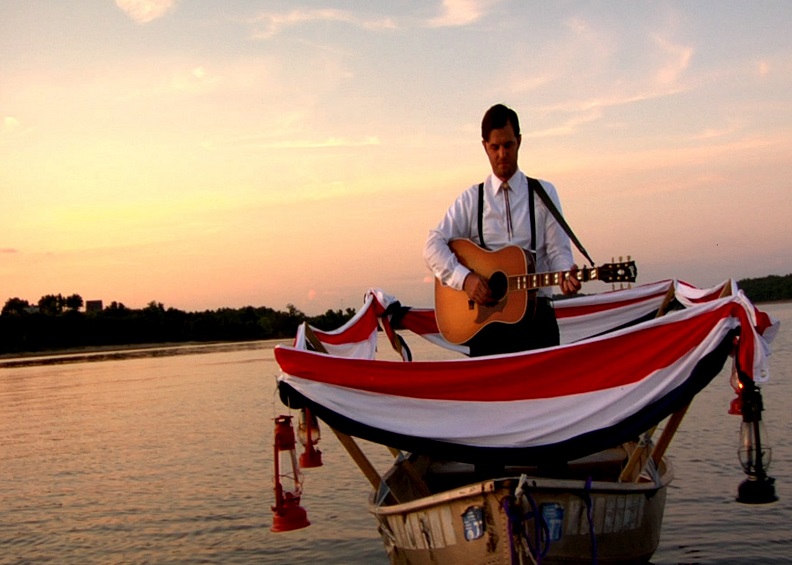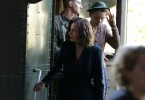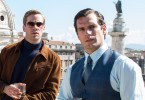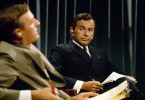For most people in 2015, Will Rogers is not much more than a name. The majority of us at least know of the airport, and perhaps even less have heard of the humorist’s memorial museums in Claremore and Oologah. But in the first half of the 20th century, Rogers was nothing short of an American icon, arguably garnering more celebrity than anyone at the time.
Still, for musician (and now filmmaker) Beau Jennings, Rogers has fallen out of memory, as he is not held in quite as high regard as the globetrotting figure was over half a century ago. As far back as 2007, Jennings considered ways to if not bring Rogers back into the limelight, at least remind people of his legacy. After seven years of off-and-on filming, The Verdigris: In Search of Will Rogers finally premiered at last week’s deadCENTER Film Festival in downtown Oklahoma City.
Jennings’ initial concept was far from the nation-spanning documentary he ultimately produced. He wanted, for instance, to keep the project strictly audio and significantly more grounded.
“My first thought was to go to the Will Rogers museum in Claremore,” Jennings said. “There’s this theater in there, and I wanted to hide out overnight and record some stuff. I don’t know, maybe his ghost would show up.”
Even before that, Jennings’ connection to Rogers took more than the average bit of soul-searching. Living in New York, Jennings endured a constant struggle to assert himself, but eventually discovered that his home, Northeastern Oklahoma, was the most unique thing he could offer. The band he once fronted, Cheyanne, began to produce songs primarily about his home state near the end of their tenure.
Jennings continued to study Oklahoma history, consistently coming back to Rogers. Slowly, more and more connections between their lives surfaced, perhaps most notably their hometowns, joined by the Verdigris River.
Jennings felt he should attempt to capture Rogers not just thematically, but also historically, traveling to various milestones across America that signified something historic and deeply emotional in regard to the famous Oklahoman.
“I was really into Alan Lomax,” Jennings said, “who recorded stuff for the Library of Congress in the 1930s. He would meet folk and blues singers where they were, like out in the field or on their porch, and just record them. I loved that idea of the environment being a part of the recording. I kind of just married those ideas of traveling and trying to capture the ambiance of the spot.”
Will Rogers traveled almost everywhere, however, forcing the scope of The Verdigris to narrow.
“It was a matter of what realistic,” Jennings said. “So for the sake of logistics and plausibility, I decided to keep it in the United States.”
Even then, Rogers traveled from New York to Alaska, still allowing Jennings to capture the entire “breadth and width” of the country. Despite possessing a solid concept, Jennings was entirely new to the filmmaking process, and the soon-to-be-documentarian needed a helping hand from a veteran. He also needed an individual whose passion for Oklahoma was nothing short of dauntless if he was going to stick the whole thing out.
Fortunately, Jennings found the perfect guiding light: Bradley Beesley, a filmmaker known for his Oklahoma-inspired works Okie Noodlin’, The Fearless Freaks, and Sweethearts of the Prison Rodeo.
“I met him while I was performing at South by Southwest,” Jennings said. “He offered to make a music video and I countered with, um, a little bit more.”
Beesley first joined Jennings to film one of the documentary’s most iconic scenes: a floating memorial garnished with American imagery and lanterns on a lake in Oologah, Rogers’ birthplace. After clearing this small hurdle, Jennings quickly learned that the path to completion was quite a bit steeper.
Considering himself “green as could be,” Jennings sought guidance from his documentarian mentor. Under Beesley’s wing, Jennings learned of color correction, sound and video editing, and countless more tools of the trade. Even now, after the completion of The Verdigris, he continues to learn.
“Every step along the way has been an education,” Jennings said.
Jennings hopes The Verdigris will be a learning experience for many. People often mistake Rogers for Woody Guthrie or Roy Rogers, much to Jennings’ dismay. Likewise, funding for the project, though beneficial, wasn’t exactly easy, so Jennings called for the help with a Kickstarter and several fundraising performances, often taking place in the cities he traveled to.
Jennings fosters the hope that, though The Verdigris may not make it to every silver screen in America, it will provide viewers with insight into one of Oklahoma’s most prolific native sons.
“I think there’s some sort of gap out there it fits in,” Jennings said, “and it may have a bit longer shelf life than something else, mostly because of the topic. It can always be that documentary about Will. People will be interested in this for years to come, even if it’s just to a small degree. It has this museum quality to it. The Verdigris will always be a resource.”
Updates are currently being posted through Jennings’ website, where posters, albums, and information on upcoming screenings are available.





